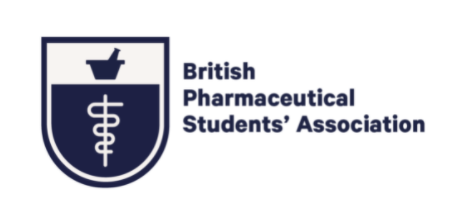Pharmacy Practice Research Around the World
On Wednesday the 15th of February (2017), Professor Derek Stewart, a former RGU student, delivered a professorial lecture which I attended. His lecture explored the University’s ‘Pharmacy Practice Research Around the World’ and how it has affected patients, organisations and other professionals alike. The three main programmes of research that Professor Stewart touched on were complementary and alternative medicines, medication in older people, and pharmacist prescribing.
Professor Stewart worked alongside a PhD student who was researching the use of complementary and alternative medicine (CAM) in pregnancy. CAM is not licenced for use in pregnancy due to lack of knowledge surrounding the medicines and a very small number of studies have been published regarding their uses in pregnant women. Due to this, adverse effects and complications are often poorly understood. It was found out that two thirds of pregnant women were using CAM in early pregnancy with oral herbal products being the most common remedy. I found this shocking as many women are cautious with their intake of alcohol, smoking and caffeine when they are pregnant, but seem to be unaware of the safety or effectiveness of CAM due to the minimal amount of research undertaken on the medicines. The same number of women were using CAM in late pregnancy, with both groups being recommended the treatments by friends and family.
When the medicines were prescribed by healthcare professionals, it was found out that they were eight times more likely to prescribe as they themselves used the alternative medicine, not because any evidence of effectiveness was there. I found this somewhat unsettling as trusted professionals prescribe CAM with little knowledge on how they may affect their patient, as none of the remedies are listed in the BNF to make the prescriber aware of risks they may carry, or how they interact with other medications.
The next topic discussed in the lecture was regarding prescribed medication in people aged 85 or older. What surprised me was that many hospital admissions in older people are often the result of prescribed medicine side effects. Professor Stewart talked about how this may be due to the high number of elderly that are on 10 or more medicines, with at least one being ‘high risk’, which require regular blood monitoring.
Also mentioned were the use of compliance aids, such as dosette boxes, and how they can cause medicines to react with one another when they are removed from sealed blister packs. This can also cause problems for patients on multiple medicines, resulting in unnecessary harm should the drugs not work as expected once taken.
To minimise these risks of adverse effects resulting from polypharmacy, Professor Stewart explained how his objective is to help healthcare professionals to more clearly define, develop, implement and evaluate a model of care. This included having frequent medication risk assessments and reviews for patients. He also mentioned that polypharmacy is not a negative, that we do not want patients to stop taking medication that helps them, as being on multiple drugs is acceptable, if they are all appropriate. There is currently a project called SIMPATHY, which is a polypharmacy management project that has analysed polypharmacy management from across the EU. The next step is to implement a management system across Europe to enable healthcare professionals to effectively manage polypharmacy in the elderly population. I feel that this will have a high impact on safe prescribing in the future, especially with other healthcare professionals such as pharmacists and nurses being able to prescribe, they will also have the ability to manage patient’s medication as well as doctors. This means there will be a greater quality of care for patients across Europe.
Finally, Professor Stewart discussed the growth of pharmacist and non-medical prescribing. He spoke about the goal that is ‘all pharmacists will be prescribers by 2023’ and how this will affect healthcare. It was mentioned that prescribing is complex and that there are many aspects that must be taken into account when prescribing for a patient. Such as; the reasons for prescribing, the patient’s medication history, the safety of the medicine, the cost, and the legal guidelines the prescriber has to follow, to name a few. The aims of non-medical prescribing are to improve patient care, by allowing people to have access to a prescribing professional, without compromising safety, and also to make better use of the skills of other healthcare professionals besides doctors, such as pharmacists.
Already 25% of pharmacists in Scotland are independent prescribers, which is a considerable amount, but it leads me to wonder how the other 75% are expected to be prescribing in less than 6 years when it isn’t a part of the Pharmacy degree. Pharmacists must work in pharmacy with patients for 2 years after qualifying before they can train to become independent prescribers. It will be interesting to see how the General Pharmaceutical Council will ensure more pharmacists are completing the training to meet the goal by 2023.
Overall, I found Professor Stewart’s lecture engaging as it made me curious about topics I had not considered in depth before, especially regarding his input in research on complementary and alternative medicine. As a pharmacy student, I feel it is important for me to have an interest in research to enable me to broaden my knowledge and continue my learning as a future professional. RGU’s research is treasured as Professor Stewart summarised; it has great impact on healthcare, improves lives with integrity and global significance.

